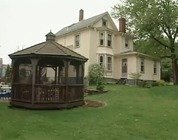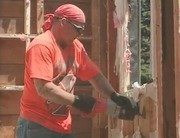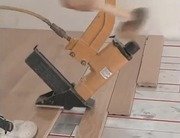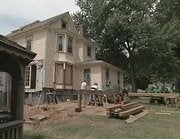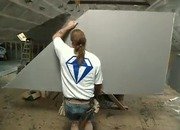Drywall vs. Blueboard Explained
In the barn of the Victorian restoration project house, Bob talks with a rep from US Gypsum about the new technology that makes blue boards stronger and lighter than ever.
Clip Summary
Bob meets with Bill Reid (of US Gypsum) in the barn of the Victorian restoration project house. Bill differentiates imperial board (blue board), which is skim-coated, from drywall (gypsum panels), whose joints are taped.In 2000, US Gypsum developed a new core technology that makes the boards stronger and lighter for easier handling, cutting, and scoring.
These new boards snap cleanly on the ends. The installer puts a back cut on the edge (so the back of the sheet doesn't hit before the front does). The blue board and skimcoat application is typically not a do-it-yourself project.
Traditional plaster jobs were very cost prohibitive so, when veneer plasters came along, they became very popular, as they give a much more monolithic look than gypsum panels, while providing an abuse resistant finish.
Upstairs, in the studio, the homeowner has specified blue board with veneer plaster. Downstairs, where he wants the option to tack artwork to the wall, the homeowner has specified a traditional drywall and tape application.
